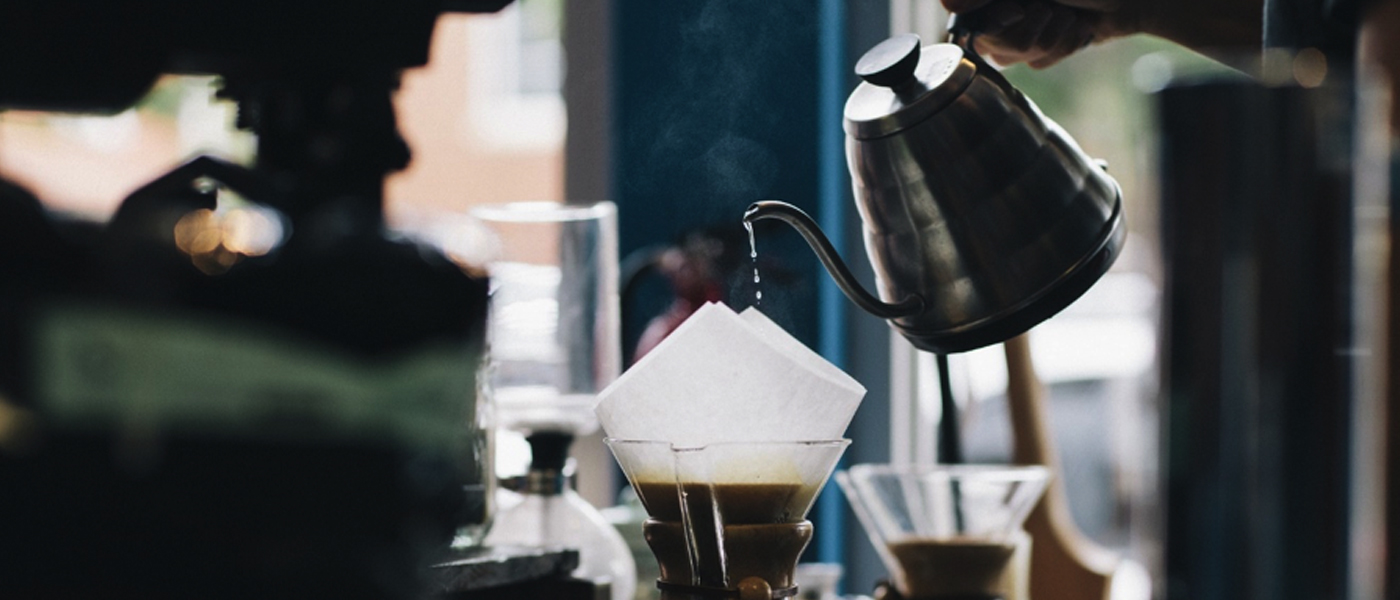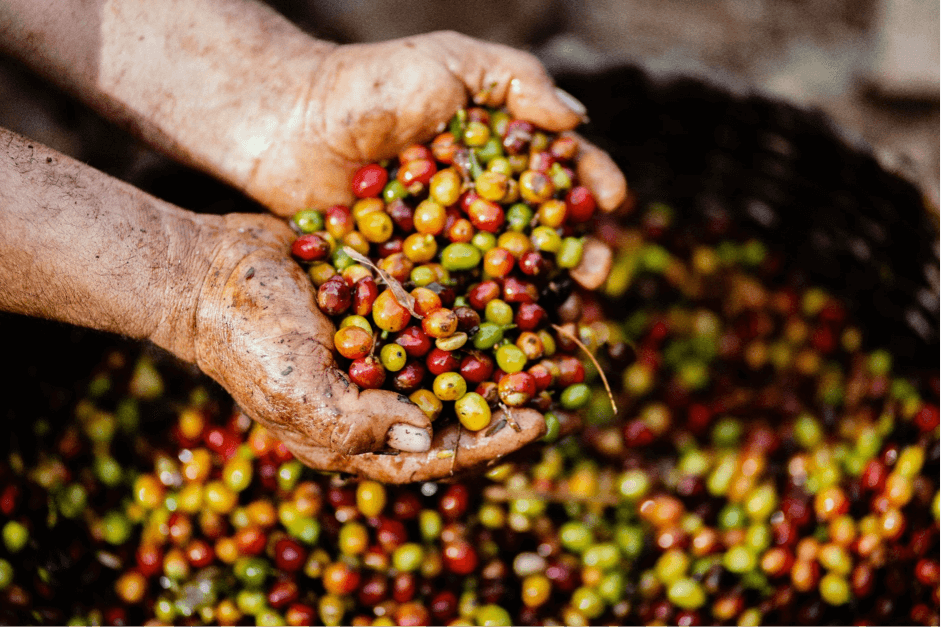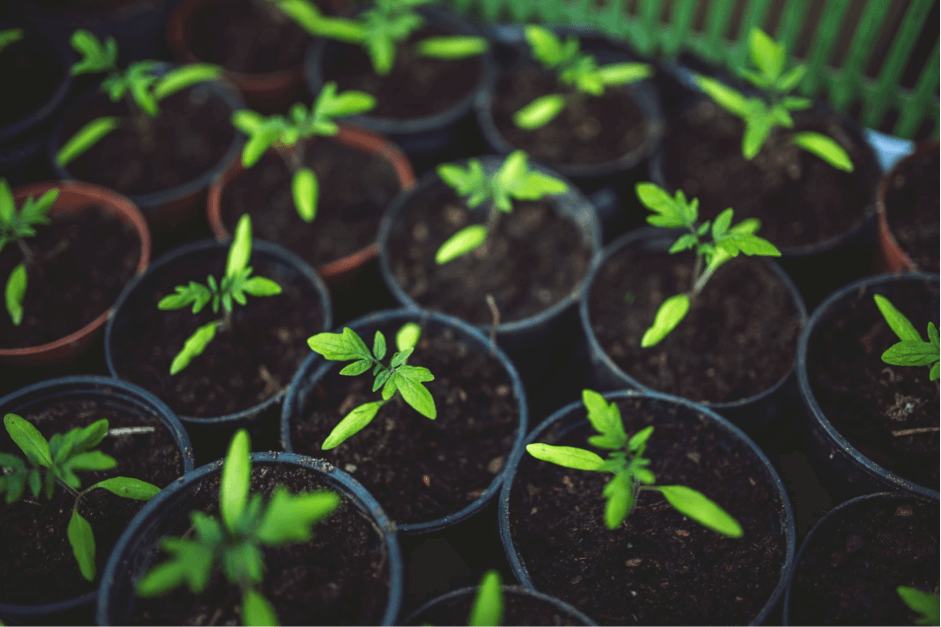- Home
- Residential
- Blog
- The food waste fight – starting with your daily grind
[Post Date]
The food waste fight – starting with your daily grind

Coffee – the office worker’s best friend, the freshmen’s newfound religion, the medium for the occasional meetup and an essential conversation topic any self-professed hipster must be able to carry.
Regardless of how we relate to the black, aromatic liquid, coffee is all around us and its impact on modern society is profound. However, beyond being the invisible lubricant in our economic machinery, ensuring our diligent workforce can stay hyper on the proverbial hamster wheel, coffee has also found its place in the sustainability movement.
Paying heed to our food waste problem, we have the world’s favourite beverage in our sights.

According to research, only 6% of the entire cherry is used to make a single cuppa. The rest? Discarded.
The Darker Shade Of Your Long Black
Around the world, we gulp down about 10 million tons of coffee a year. To put it into perspective, that would make 1 trillion cups of coffee (assuming all coffees are drunk as espressos with each shot using 10 grams of coffee beans).
While your morning cappuccino can help you see the bright side of life for the day, such statistics also carry with it the dark side of the story – any kind of production causes ecological impact; consuming 1 trillion cups of coffee can and will generate a lot of food waste.
According to research by Colombian coffee logistics firm Almacafé, only 6% of the original coffee cherry is used to make a cup of coffee; only the seed is used, while the flesh and skin are simply discarded and will serve no other purpose in the coffee trading cycle.
Turning Black Into The New Green
Not all of it is doom and gloom, though. Such gargantuan scale of consumption also represents environmental opportunities of equal, if not greater, value. In recent decades, used coffee grounds have been included in the growing list of items to fuel the 21st century circular economy.
In an article published by CNA Lifestyle, homegrown vertical farm Sky Greens partnered Nespresso to recycle used coffee pods into fertilisers and organic compost. In an article published earlier this year by TODAY, scientists at Nanyang Polytechnic turned the world’s favourite drink into the world’s favourite material – plastic. A biodegradable kind, at that.
However, recycling used coffee grounds need not be reserved for geeky scientists, Nobel Prize laureates nor farmers from the future. There are many ways we coffee lovers can do our part to help keep the coffee industry’s waste footprint at a minimum.
Initiatives From The Ground Up
The advent of sustainable living and mindful eating lifestyles have made us pay more attention to where our food comes from and how they are produced.
Buying coffee that is Fairtrade-certified not only ensures farmers are fairly compensated for their noble work in upkeeping our unashamed dependence on caffeine, but we are also ensuring the coffee we buy are grown with sustainable and eco-friendly practices. Other such labels include “UTZ Certified”, “Common Code for the Coffee Community (4C)”, “Rainforest Alliance” and others. Certain coffee brands like Starbucks and Nespresso have their own internal certifications as well.
Getting your coffee beans from Fairtrade-certified sources is only half the battle won; the waste created from consumption still needs to be addressed by the end consumer.
The next time you brew yourself a cuppa, do not hurry to chuck the used grounds into the bin just yet; they can be repurposed in various ways:
As compost
Plants are coffee-guzzlers like us. Used coffee grounds can add nitrogen, potassium and magnesium to the soil, making it a good. The rough consistency of the grounds is also useful for keeping the soil loose, helping to promote soil aeration.

Used coffee grounds add various nutrients to the soil, and its consistency promotes soil aeration.
As pest repellent
Garden pests like ants, snails, and slugs dislike coffee since compounds such as caffeine and diterpenes in coffee are toxic to them. Coffee grounds are also useful for warding off mosquitoes, fruit flies and beetles. Stir together coffee grounds, dried orange peels and/or rosemary for a pleasant-smelling pest-buster kit.
As portable deodorants
Thanks to its nitrogen compounds, coffee is adept at absorbing odours. Spread out and dry the grounds in the oven, pack it in new tea paper filters as handy deodorants for old socks, refrigerator, shoes and bags.
Start your sustainable journey with Geneco’s Get it Green plan today.
References:
- Elangovan, N. (2020, June 5) Singapore households generated additional 1,334 tonnes of plastic waste during circuit breaker: Study, Today Online.
https://www.todayonline.com/singapore/singapore-households-generated-additional-1334-tonnes-plastic-waste-during-circuit-breaker
Image Credits: Nylon Coffee Roasters
Source: The Sustainability Project
